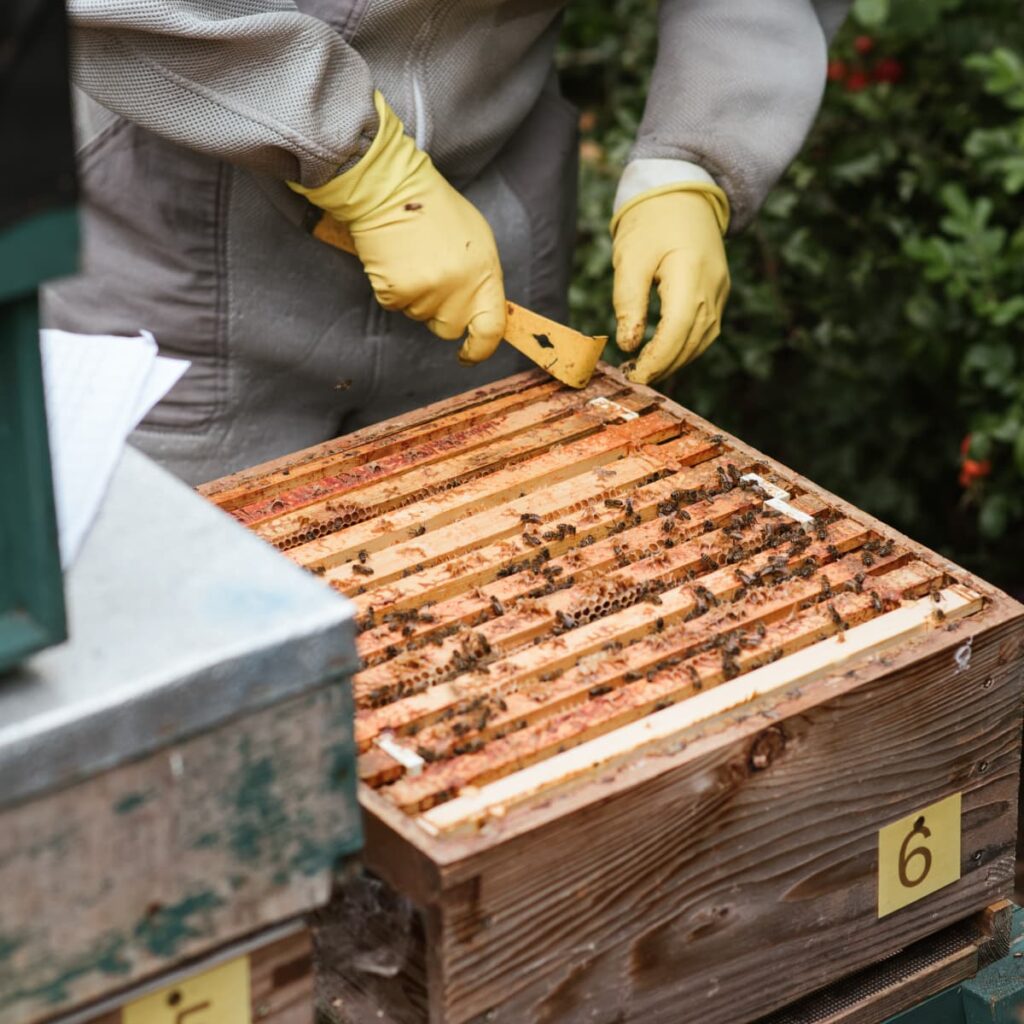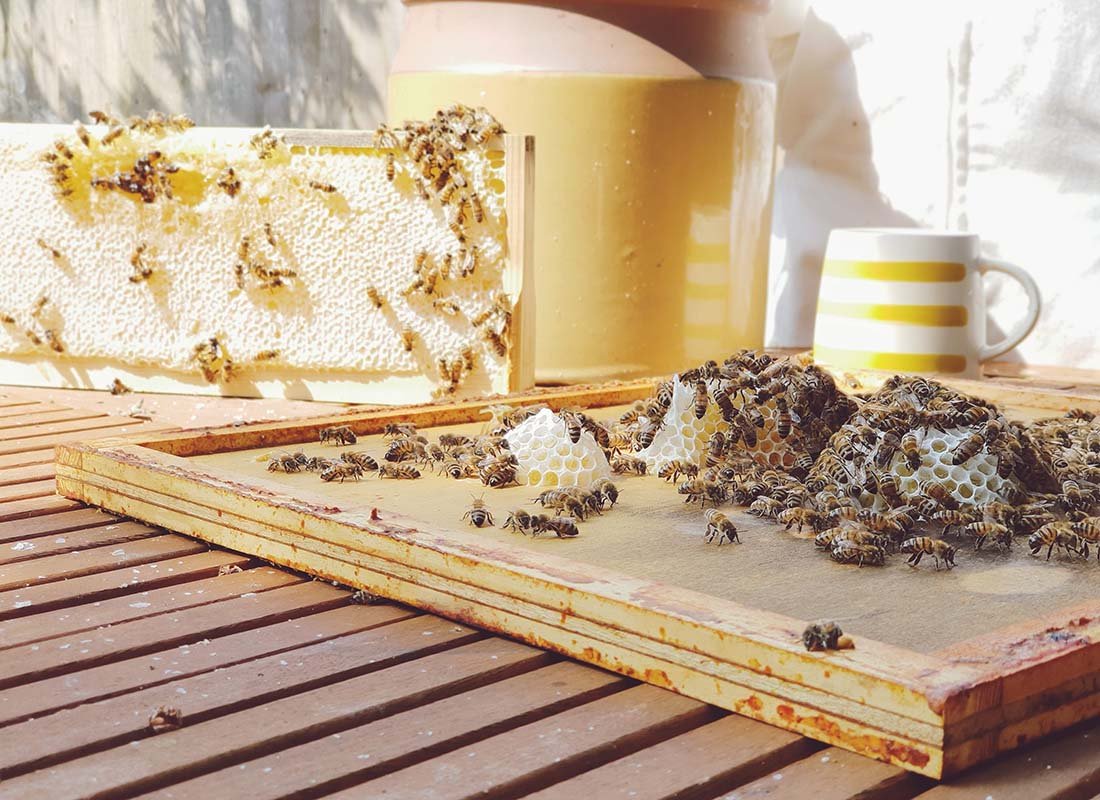
If you’ve recently become a proud beekeeper or are considering taking up beekeeping, you might be wondering, “How do I care for my bees?” In this article, we will explore the essential steps and practices involved in beekeeping to ensure the health and well-being of your buzzing friends. From providing a suitable hive environment to monitoring their health, feeding, and protecting them from pests, we will guide you on your journey to becoming an effective and responsible beekeeper.
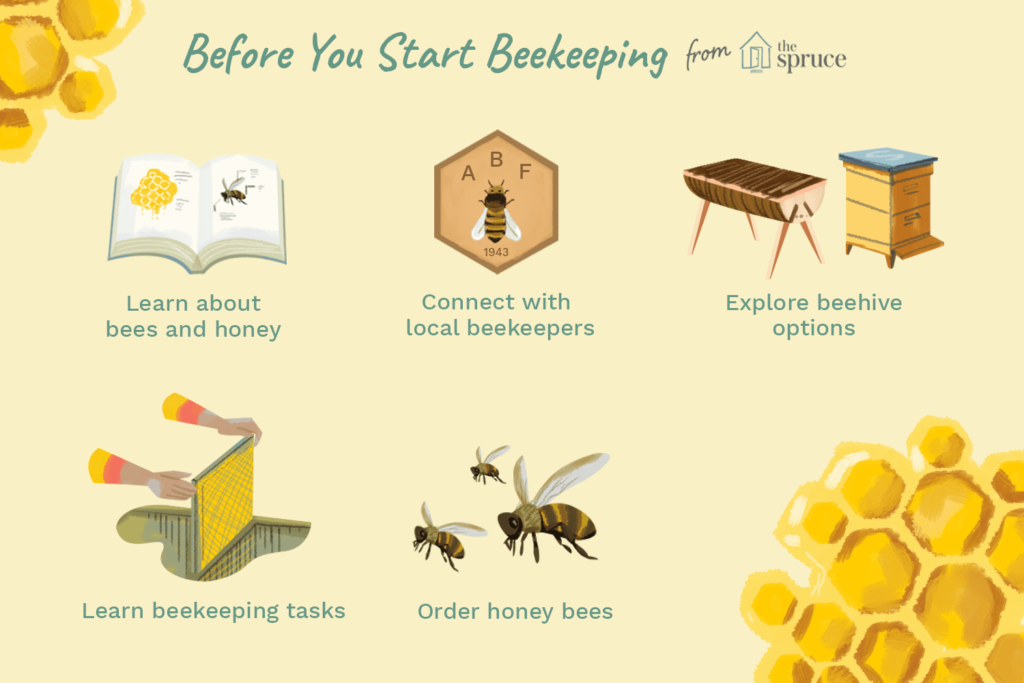
Housing and Equipment
Choosing the Right Hive
When it comes to beekeeping, choosing the right hive is crucial for the well-being of your bees. The two most common types of hives are Langstroth hives and top-bar hives. Langstroth hives consist of multiple boxes stacked vertically, whereas top-bar hives have bars instead of frames. Both types have their own advantages and disadvantages, so it’s important to consider factors such as ease of use, hive management, and personal preference when making your decision.
Providing Proper Ventilation
Proper ventilation is essential for maintaining a healthy hive. Bees generate heat during the winter months to keep the colony warm, and adequate ventilation helps regulate the temperature and prevent moisture buildup. Make sure your hive has ventilation holes or screened bottom boards to allow air to circulate. Regularly monitoring the ventilation and adjusting it based on weather conditions will help ensure a comfortable living environment for your bees.
Using Frames and Foundation
Frames and foundation are vital components of a beekeeping hive. Frames provide structure and support for the comb, while foundation provides a guide for the bees to build their honeycomb. When choosing frames, opt for ones with sturdy construction and the appropriate size for your hive. Foundation comes in different options including plastic or beeswax-coated, and it’s best to consider the preferences of your bees when selecting the type.
Maintaining Hive Cleanliness
Maintaining a clean hive is crucial for the health of your bees. Regularly inspect and clean your hive, removing any debris, dead bees, or excess propolis. This helps prevent the buildup of pests and diseases, ensuring a hygienic living environment for your bees. Additionally, consider using screened bottom boards to allow debris to fall through the hive, reducing the risk of pests and promoting airflow.
Feeding and Nutrition
Understanding Bee Nutrition
Proper nutrition plays a vital role in the overall health and productivity of your bees. Bees require a balanced diet consisting of carbohydrates, proteins, vitamins, and minerals. Carbohydrates are obtained from nectar and honey, while proteins and other nutrients are derived from pollen. Understanding the nutritional needs of your bees will help you provide them with the necessary resources to thrive.
Proper Pollen and Nectar Availability
Ensuring a steady supply of pollen and nectar is essential for your bees, especially during periods of nectar dearth. Planting a variety of bee-friendly flowers and trees in your vicinity will provide abundant food sources for your bees. Research the flowering patterns of different plants to ensure a continuous supply of pollen and nectar throughout the seasons. Additionally, consider leaving blooming plants in your garden to provide a natural food source for your bees.
Supplemental Feeding
In some cases, supplemental feeding may be necessary to support your bees during times when natural food sources are limited. Sugar syrup or fondant can be used as an alternative food source. However, it’s important to note that supplemental feeding should be used sparingly and only when needed, as it cannot replace the nutritional value provided by natural food sources. Consult with experienced beekeepers or local beekeeping associations for guidance on when and how to supplementally feed your bees.
Managing Varroa Mite Infestation
Varroa mites are one of the biggest threats to bee colonies worldwide. These parasitic mites feed on bees, weakening their immune systems and transmitting diseases. Regular monitoring and management of varroa mite infestations are crucial. Consider implementing integrated pest management strategies, such as using organic acids or natural oils to control mite populations. Chemical treatments should only be used as a last resort and under the guidance of professionals to minimize the impact on your bees and the environment.
Bee Population Management
Queen Bee Management
The queen bee is the heart of the colony, responsible for laying eggs and maintaining the population. Regular monitoring of the queen’s health and productivity is important to ensure the colony’s success. Look for signs of a healthy queen, such as a strong laying pattern and a calm demeanor. If your queen is not performing well, consider re-queening the hive or introducing a new queen to maintain a strong and productive colony.
Swarm Prevention
Swarming is a natural reproductive process of bees that results in the division of the colony. While swarming is a sign of a healthy and thriving colony, it can also lead to the loss of a significant portion of your bees. Implementing swarm prevention techniques, such as providing ample space for the colony to expand, removing queen cells, and conducting regular inspections, can help minimize the occurrence of swarming.
Splitting the Hive
Splitting the hive is a method of increasing your bee population and preventing swarming. By creating a new hive with a portion of the existing colony, you can ensure that both hives have a strong population and ample resources. Splitting can also be used as a means of creating new colonies or replacing weak queens. It’s important to carefully consider the timing and conditions for splitting to increase the chances of success.
Re-queening or Introducing New Queen
Re-queening or introducing a new queen to your hive can be necessary for various reasons, such as aging queens or queen failure. When introducing a new queen, it’s essential to follow proper protocols to ensure acceptance by the colony. Techniques such as using queen cages, providing a gradual introduction, and introducing the queen during a nectar flow period can increase the chances of successful integration.
Disease and Pest Control
Regular Hive Inspections
Regular hive inspections are crucial for detecting and preventing diseases and pests. During inspections, carefully observe the overall health and behavior of your bees, checking for signs of diseases or pest infestations. Look for symptoms such as abnormal bee behavior, discoloration or deformities in brood, or unusual odors. Inspecting your hive every 1-2 weeks during active seasons and at least once a month during dormant periods can help catch potential issues early.
Identifying and Treating Diseases
Bee colonies can be susceptible to various diseases, including American foulbrood, European foulbrood, and chalkbrood. Familiarize yourself with the symptoms and characteristics of these diseases, as well as appropriate treatment methods. If you suspect a disease outbreak in your hive, consult with experienced beekeepers, local beekeeping associations, or bee inspectors to determine the best course of action for treatment.
Controlling Common Pests
Pests such as wax moths, small hive beetles, and ants can cause significant damage to your hive if left unchecked. Implement preventive measures such as maintaining a clean hive, using hive beetle traps, and applying essential oils to deter pests. Regularly monitoring your hive for signs of infestation allows for early detection and targeted pest control measures to protect your bees.
Integrated Pest Management
Integrated Pest Management (IPM) is an effective approach for managing pests in beekeeping. It involves combining multiple pest control methods, using biological, physical, and chemical means as appropriate. IPM focuses on minimizing the use of chemicals and prioritizes natural and organic solutions wherever possible. By employing IPM techniques, you can help maintain a healthy and thriving hive while minimizing the impact on the environment.
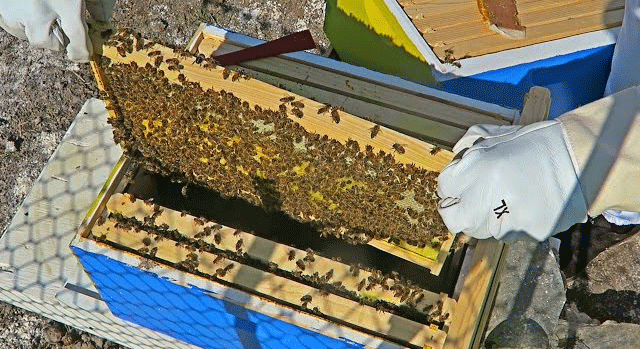
Seasonal Hive Management
Spring Hive Management
Spring is a crucial season for beekeeping as it marks the start of increased activity and population growth. During this time, focus on ensuring a strong and healthy colony by providing adequate space, monitoring the hive for diseases and pests, and managing swarm prevention techniques. Opening up the hive for an inspection during early spring can provide valuable insights into the health of your colony and help you make appropriate management decisions.
Summer Hive Management
Summer is a busy time for bees, with foraging in full swing and the colony’s population at its peak. Ensure your bees have access to a diverse range of nectar and pollen sources by planting a variety of bee-friendly flowers. Regularly inspect your hive for signs of diseases and pests, ensuring the health and productivity of your bees. Providing ample ventilation and shade can help keep the hive cool during hot summer days.
Fall Hive Management
As the season transitions to fall, it’s important to prepare your hive for winter. Conduct a thorough inspection to ensure the hive is healthy and has enough stores of honey to sustain the colony through the colder months. Consider feeding your bees supplemental sugar syrup or fondant if their honey reserves are low. Additionally, insulate your hive and reduce the entrance size to conserve heat during the winter.
Winter Hive Management
Winter is a challenging season for beekeepers as bees need to survive the cold temperatures and limited food sources. Minimize disturbance to the hive during winter, as the bees form a cluster to keep warm. Ensure the hive is properly insulated, and provide an emergency food source such as fondant or candy boards if necessary. Regularly monitor the hive’s weight and temperature to ensure the bees have enough resources to make it through winter.
Harvesting Honey
Knowing When to Harvest
Harvesting honey at the right time is crucial to ensure the highest quality and maximum yield. Consider factors such as the local climate, nectar flow, and honey moisture content to determine when the honey is ready for extraction. Use techniques such as a refractometer or a water content tester to measure moisture levels, as honey with high moisture can ferment or spoil. Wait until the honey cells are capped, indicating that the honey is fully ripened and ready for harvesting.
Extracting Honey from Frames
To extract honey, remove the frames from the hive and gently brush any bees off. Uncap the honey cells using a hot knife or uncapping fork, exposing the honey for extraction. Place the uncapped frames in a honey extractor, which uses centrifugal force to spin out the honey. Ensure the honey is filtered to remove any impurities or wax particles. Finally, store the honey in clean, airtight containers to maintain its quality and freshness.
Processing and Storing Honey
Once the honey is extracted, it may require further processing to remove any air bubbles or impurities. This can be done by slowly heating the honey in a double boiler, stirring gently to facilitate the removal of bubbles. Allow the honey to cool and settle before bottling it. Store the honey in a cool, dark place to maintain its flavor and prevent crystallization. Proper labeling and storing the honey in airtight containers will help preserve its quality and prolong its shelf life.
Leaving Adequate Honey for Bees
When harvesting honey, it’s important to leave enough honey for your bees to sustain themselves throughout the year. Bees rely on honey as their primary food source, especially during the winter months when forage is limited. It’s recommended to leave at least 30-50 pounds (14-23 kilograms) of honey per hive to ensure the bees have enough reserves to survive. Monitoring the hive’s weight and stores regularly will help you determine if supplemental feeding or additional honey frames are needed.
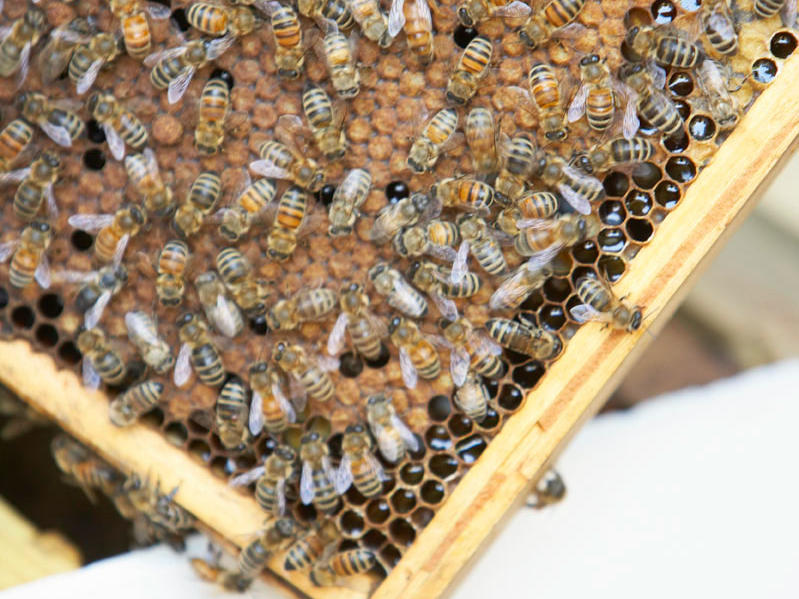
Providing Water Sources
The Importance of Water
Water is essential for the survival and well-being of your bees. Bees need water to cool the hive and dilute honey to feed their young. Providing a consistent and clean water source near the hive is crucial to prevent them from seeking water elsewhere, potentially causing nuisance issues. Without a nearby water source, bees may resort to pools, bird baths, or neighbors’ swimming pools, leading to conflicts. By providing them with water, you can ensure their hydration while minimizing any inconveniences.
Types of Water Sources
Bees prefer shallow water sources where they can land and drink without the risk of drowning. Consider placing shallow dishes or trays filled with clean water in your garden or near the hive. Pebbles or twigs can be added to provide landing spots for the bees. Alternatively, a drip irrigation system or a small pond can serve as a continuous water source, ensuring a readily available supply for your bees.
Water Source Placement
When placing water sources for your bees, consider their accessibility and safety. Ensure the water is easily accessible and not obstructed by vegetation or other obstacles. Place the water source in a quiet and undisturbed location, away from high human traffic areas. Providing a variety of water sources throughout your garden can also help disperse the bee activity and prevent overcrowding at a single location.
Maintaining Clean Water
To prevent waterborne diseases or contaminants, it’s important to maintain clean water sources for your bees. Change the water regularly to prevent stagnant conditions, which can attract unwanted insects or bacteria. Clean the water dishes or trays regularly, removing debris or algae buildup. By providing clean and fresh water, you can help keep your bees healthy and minimize the risk of any water-related issues.
Safety Precautions
Wearing Protective Clothing
When working with bees, it’s essential to wear proper protective clothing to prevent stings and minimize the risk of any allergic reactions. A beekeeping suit or jacket, gloves, and a veil are recommended to shield your body from bee stings. Ensure the protective clothing fits well and is properly sealed to prevent any gaps where bees can enter. Always prioritize safety by wearing the necessary protective gear when interacting with your bees.
Using Smokers
Smokers are valuable tools in beekeeping as they help calm the bees during hive inspections or other manipulations. The smoke from the smoker disrupts the bees’ communication and triggers a response to prepare for a potential fire. This response leads the bees to consume honey, making them calmer and less inclined to sting. However, it’s important to use smokers responsibly and avoid excessive smoke, as it can stress the bees and impact their hive environment.
Identifying Allergies and Reactions
Before getting involved in beekeeping, it’s important to be aware of any allergies or reactions you may have to bee stings. Allergic reactions can range from mild localized reactions to severe anaphylaxis. If you suspect you may be allergic to bee stings, consult with an allergist before engaging in beekeeping activities. Understanding your own health and taking appropriate precautions will help ensure a safe and enjoyable beekeeping experience.
Handling Bees with Care
When handling bees, it’s crucial to approach them with care and respect. Avoid sudden movements or loud noises that may startle the bees. Work slowly and calmly, using gentle motions when interacting with the hive. Remember that bees are less likely to sting if they feel unthreatened. By practicing gentle beekeeping techniques and treating your bees with care, you can help maintain a harmonious relationship and minimize the likelihood of stinging incidents.
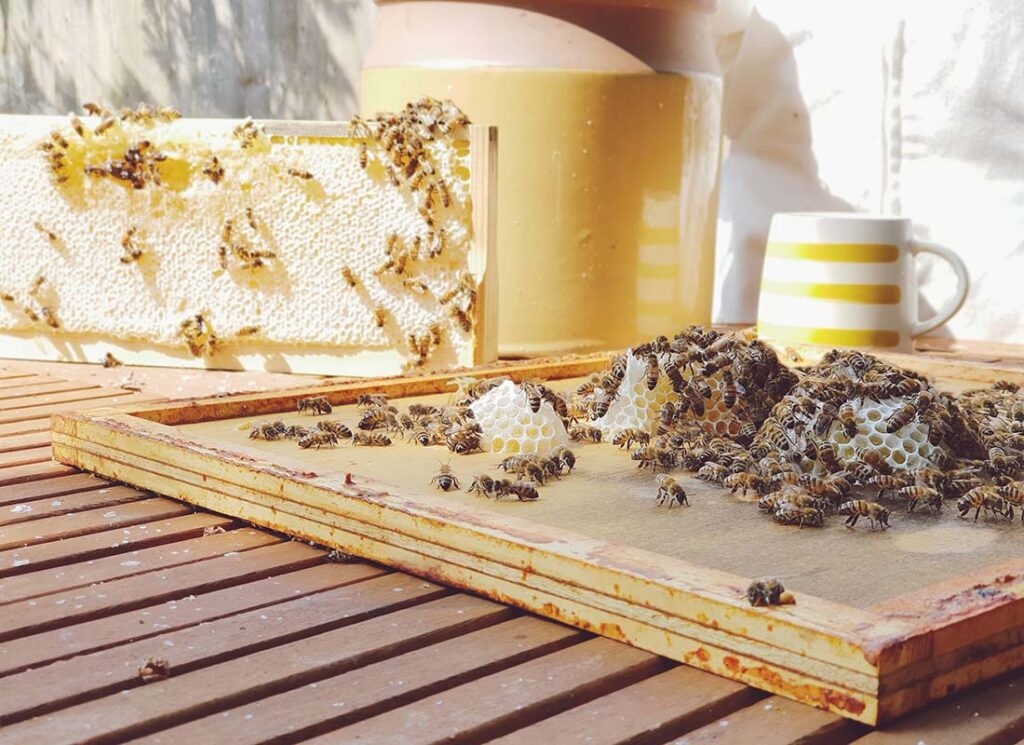
Educating Yourself
Joining Beekeeping Associations
Joining local beekeeping associations or clubs is a great way to expand your knowledge and connect with experienced beekeepers. These associations often offer workshops, mentoring programs, and educational resources to help beginners learn the ins and outs of beekeeping. By becoming a member, you can gain valuable insights, access to expert advice, and networking opportunities within the beekeeping community.
Attending Workshops and Conferences
Attending workshops and conferences dedicated to beekeeping is an excellent way to enhance your understanding of beekeeping practices and stay updated with the latest techniques and research. These events often feature presentations by renowned experts, hands-on demonstrations, and opportunities for networking with fellow beekeepers. Check local listings or beekeeping organizations for upcoming events in your area.
Reading Books and Online Resources
Books and online resources provide a wealth of knowledge on various aspects of beekeeping. From beginner guides to advanced topics, there is a vast amount of literature available to help you expand your beekeeping expertise. Reading books by expert beekeepers and reputable sources can provide valuable insights and practical tips for successful beekeeping. Online forums, websites, and beekeeping blogs also offer a platform for sharing experiences and seeking advice from fellow beekeepers.
Seeking Mentorship
Mentorship is a valuable way to learn from experienced beekeepers and gain practical hands-on experience. Reach out to local beekeepers or beekeeping associations to find a mentor who can guide you in your beekeeping journey. Mentors can share their knowledge, offer guidance specific to your local conditions, and help troubleshoot any challenges you may encounter. Having a mentor can significantly enhance your learning process and provide invaluable support.
Environmental Impact
Planting Bee-Friendly Flowers
Creating a bee-friendly environment in your garden or surrounding areas is essential for supporting the health and well-being of bees. Plant a diverse range of flowering plants that provide abundant pollen and nectar throughout different seasons. Choose native plants whenever possible, as they have evolved to suit local bee species. Avoid using pesticides or herbicides, as they can be harmful to bees and other pollinators.
Avoiding Pesticide Use
Pesticides pose a significant threat to bees and other pollinators. Whenever possible, avoid using chemical pesticides or opt for natural alternatives. If the use of pesticides is necessary, apply them in the late evening when bees are less active, and avoid spraying directly on flowers or near beehives. Always follow the instructions provided by the manufacturers and consult with local beekeeping associations or experts for guidance on bee-safe pest control methods.
Creating Bee-Friendly Habitats
In addition to planting bee-friendly flowers, creating habitats that provide shelter and nesting opportunities for bees is crucial for supporting their populations. Leave undisturbed areas or designate sections of your garden as wildflower meadows or bee-friendly zones. Deadwood or nesting boxes can provide suitable shelter for solitary bees. By creating diverse habitats, you can attract different bee species and contribute to their overall diversity and well-being.
Contributing to Conservation Efforts
Bees play a vital role in pollinating plants, contributing to the overall health and biodiversity of ecosystems. Supporting conservation efforts aimed at protecting bees and their habitats is essential for their long-term survival. Consider participating in citizen science projects that involve monitoring bee populations or planting wildflower corridors to connect fragmented habitats. Supporting organizations dedicated to bee research and conservation can also help contribute to the preservation of these invaluable pollinators.
Caring for your bees encompasses various aspects, from providing suitable housing and nutrition to managing population dynamics and ensuring a safe and healthy environment. By following these guidelines and continuously educating yourself, you can develop the skills and knowledge necessary to become a successful beekeeper. Remember, beekeeping is a rewarding and fulfilling experience that allows you to connect with nature and contribute to the conservation of these fascinating creatures.
